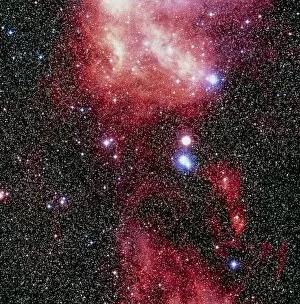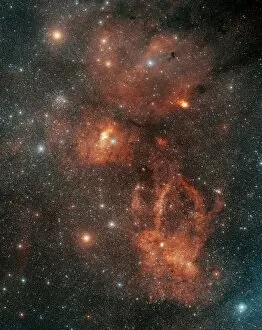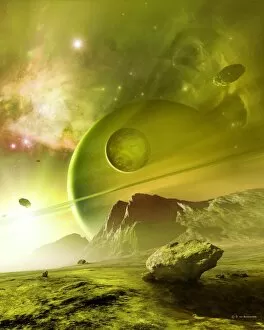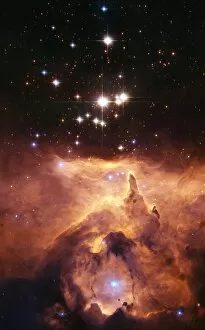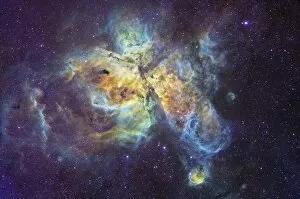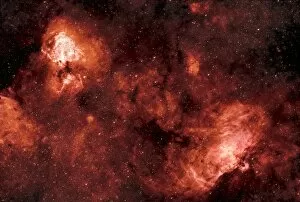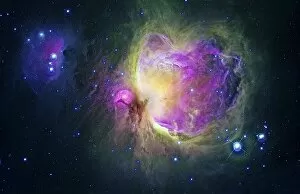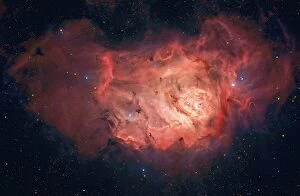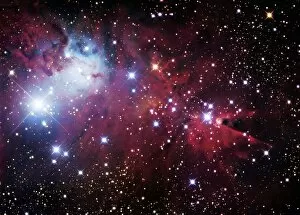Emission Nebula Collection (page 10)
"Exploring the Mysteries of Emission Nebulae: A Glimpse into the Cosmic Artistry" The captivating beauty of emission nebulae
For sale as Licensed Images
Choose your image, Select your licence and Download the media
"Exploring the Mysteries of Emission Nebulae: A Glimpse into the Cosmic Artistry" The captivating beauty of emission nebulae, such as the Orion Nebula (M42) and Nebula Sh 2-106, is unveiled in this stunning Hubble Space Telescope image. These celestial wonders, scattered throughout our vast universe, offer a glimpse into the mesmerizing dance of gas and dust. In Serpens lies M16, famously known as The Eagle Nebula. Its ethereal glow illuminates space with intricate pillars that resemble colossal wings. Just like its avian namesake, this nebula symbolizes freedom and exploration. The Orion Nebula (M42), an astronomical masterpiece located within the constellation Orion, showcases a stellar nursery where new stars are born amidst swirling clouds of colorful gases. Adjacent to it is M43, adding another layer of enchantment to this cosmic spectacle. Venturing beyond our Milky Way galaxy brings us to MACS J0717 - a massive galaxy cluster that houses countless emission nebulae within its gravitational embrace. Here we witness galaxies merging and intertwining in a celestial ballet that spans millions of light-years. Traveling further southward leads us to the Large Magellanic Cloud – a satellite galaxy visible from Earth's southern hemisphere. Within its boundaries lies NGC 3324 or Gabriela Mistral Nebula; named after Chilean poet Gabriela Mistral for her profound impact on literature and culture. IC 2177 presents itself as The Seagull Nebula – an awe-inspiring sight resembling a majestic bird soaring through interstellar space. Its radiant colors evoke feelings of serenity and grace against the backdrop of infinite darkness. Perhaps one of the most iconic images captured by astronomers is that of Pillars of Creation in The Eagle Nebula. These towering structures serve as nurseries for newborn stars while simultaneously showcasing nature's ability to shape and sculpt the cosmos.

